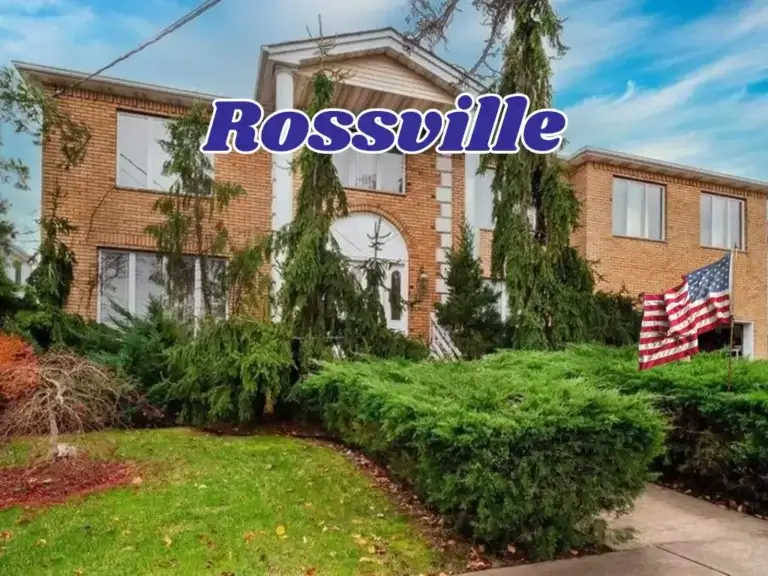Sandy Ground, Staten Island: Historic Free Black Settlement
Sandy Ground, located on the South Shore of Staten Island, is recognized as the oldest continuously inhabited free Black settlement in the United States. This area is situated within the Rossville neighborhood. Sandy Ground was established by freed African Americans and escaped slaves. This community holds a significant place in American history.
Beyond its historical longevity, Sandy Ground was a thriving economic hub for Black Americans. The community’s economy was particularly bolstered by its oyster farming industry, which flourished until the early 20th century when pollution and overfishing led to its decline.
The Sandy Ground Historical Society plays a crucial role in preserving the area’s rich history and cultural legacy. The society operates a museum and organizes events aimed at educating the public about this important part of American history.
Historical Background of Sandy Ground
Sandy Ground was established in 1828 by freed African Americans, with the first documented land purchase made by Captain John Jackson, shortly after slavery was abolished in New York in 1827. The community was initially known as Harrisville and then Little Africa before it became known as Sandy Ground due to its sandy soil.
In the early 1800s, the neighborhood was renamed Rossville after Colonel William Ross, a prominent landowner who built a wooden replica of Windsor Castle and hired Frederick Law Olmsted to design the grounds. In 1828, John Jackson became the first Black person to own property on Staten Island, purchasing land in the Sandy Ground section of Rossville.
The community developed a thriving oyster farming industry. When New York’s fresh oyster supply dwindled, oystermen brought immature oysters from other eastern seaboard locations, particularly Maryland, to replenish the oyster beds around New York Harbor. Many Maryland oystermen, facing repressive laws in the 1840s and 1850s, settled permanently in Sandy Ground.
Sandy Ground also gained fame for its strawberries, which thrived in the sandy soil. During strawberry season, a steamer from New Brunswick, New Jersey, would transport the prized Staten Island strawberries to Manhattan, where they were highly valued for their size and flavor.
Community and Culture
Established in 1850, the local A.M.E. Zion Church was central to religious and social life in Sandy Ground. It played a significant role in the Underground Railroad, providing refuge for escaped slaves.
The Sandy Ground Historical Society, founded in the 1970s, operates the Sandy Ground Historical Museum. This museum hosts annual festivals, educational programs, and exhibits to preserve and share the community’s history.
Residential Architecture
Sandy Ground features historic homes, including five structures designated as New York City landmarks. These homes reflect the practical and vernacular architectural style of the 19th century.
Parks and Recreation Areas
Nearby parks, such as Fairview Park and Clay Pit Ponds State Park Preserve, offer recreational activities and natural beauty. These parks provide hiking trails, picnic areas, and opportunities to enjoy the outdoors.
Education and Community Services
The Sandy Ground Historical Society provides educational initiatives, including school programs and community outreach. Local organizations support various community services, enhancing the quality of life for residents.
Transportation
Sandy Ground is accessible via the Staten Island Ferry and local roads. The construction of the Verrazzano-Narrows Bridge in the 1960s improved connectivity, facilitating easier travel to and from the area.
Local Businesses and Economy
Historically, oyster farming was the primary economic activity in Sandy Ground. Today, the community features modern businesses and services that cater to local needs, contributing to the economy while preserving its heritage.
Notable Landmarks
Sandy Ground is home to key landmarks, including the local A.M.E. Zion Church, a historic cemetery, and original homes. These landmarks offer a glimpse into the community’s rich history and enduring legacy.
Demographics
The population of Sandy Ground has changed over the years, but about ten families of descendants still reside here. The community maintains strong ties to its heritage, with many returning for church services and community events.
Future Development Plans
Future plans for Sandy Ground focus on preserving its history while encouraging sustainable development. Efforts aim to balance growth with the protection of historic sites, addressing challenges from urban development and environmental threats.
Challenges and Solutions
Sandy Ground has faced environmental challenges like pollution, which ended its oyster farming industry, and natural disasters such as Hurricane Sandy. Fires in 1930 and 1963 also threatened the community. Preservation efforts and community resilience initiatives are crucial in addressing these challenges.
Conclusion
Sandy Ground is a testament to the strength and resilience of its community. Its historical significance and ongoing preservation efforts highlight the importance of this unique settlement. Visitors are encouraged to explore Sandy Ground and support the Sandy Ground Historical Society in their mission to preserve this vital piece of American history.







